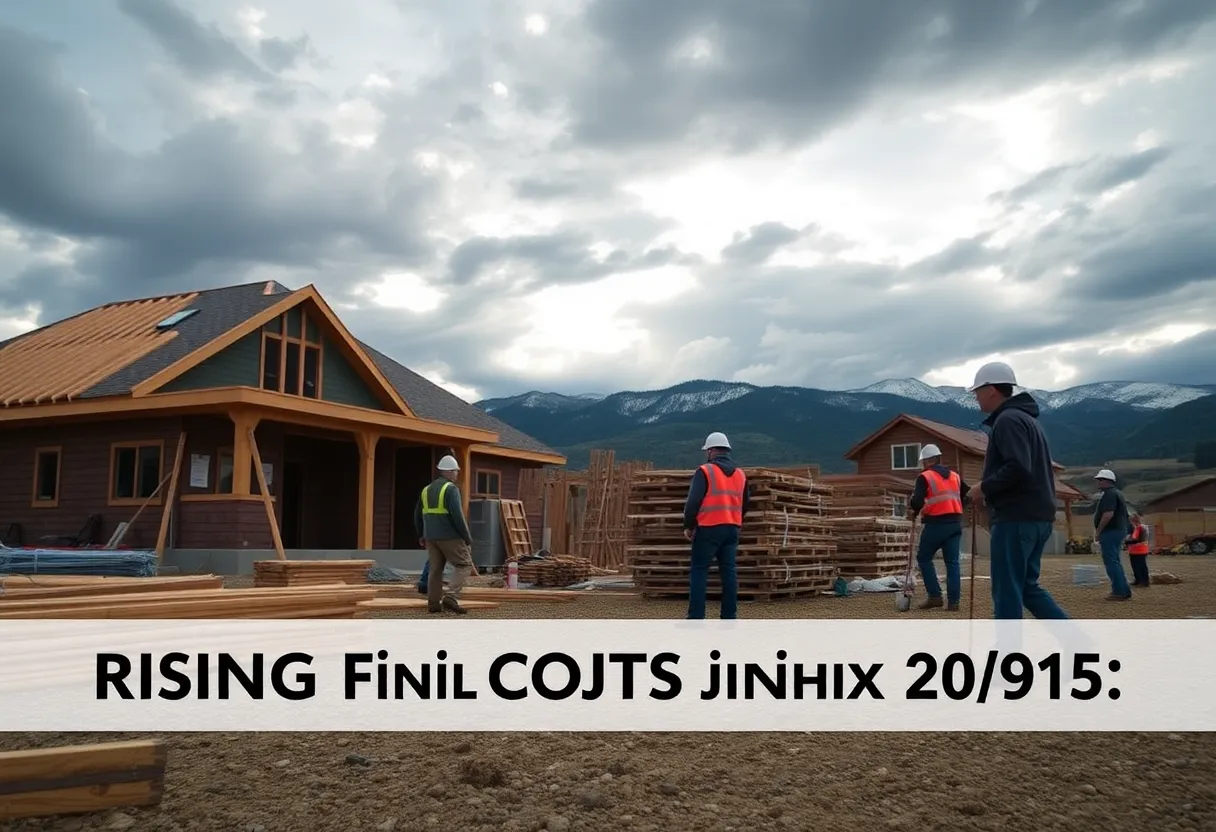News Summary
Denver’s construction industry is grappling with severe challenges due to skyrocketing tariffs on essential building materials. A recent report shows that tariffs on metals like steel and aluminum have surged, significantly increasing costs for developers and impacting housing affordability. As material prices escalate, construction activity slows, leading to concerns about future housing development and a potential increase in Colorado’s already pressing housing shortage. Governor Polis has raised alarms about the economic strain these tariffs place on consumers and the broader economy.
Denver Faces Major Construction Challenges Due to Rising Tariffs and Material Costs
Denver, Colorado—The state’s construction industry is experiencing significant difficulties as tariffs on key building materials continue to increase, resulting in higher costs for developers, consumers, and homeowners. A recent report from the Colorado Office of State Planning & Budget highlights how escalating tariffs are affecting the local economy, raising concerns about the future of construction and housing development across the state.
Rising Tariffs and Cost Impacts
Tariffs on crucial construction materials, such as steel, aluminum, and copper, have surged from an average of 3% in 2024 to approximately 21% in 2025. This sevenfold increase marks one of the highest tariff levels seen in over a century, with the last comparable period dating back to 1910. The sharp rise is substantially impacting construction costs, especially given that raw materials account for a large portion of building expenses—between 35% and 50% of total construction costs for homes.
This escalation has led to estimated increases in raw material prices by 20% to 40% compared to levels in 2020. For residential construction specifically, about 7% of materials are imported, and the resulting higher prices have caused project costs to rise between 15% and 25% over the past five years. Consequently, developers face inflated expenses, which contribute to a slowdown in new construction projects and increased difficulty in maintaining profit margins.
Impact on Construction Activity and Housing Market
The effects of rising costs are particularly severe in the housing sector. Construction permits, a key indicator of future development activity, are projected to increase by 3.9% in 2025. However, recent revisions have curtailed these expectations dramatically, bringing growth forecasts down to only 0.5%, with official projections suggesting permit levels may stabilize near those seen in 2024.
With construction costs rising sharply, there is increased apprehension about the impact on affordable housing. In rural areas of Colorado, where housing shortages are already acute, declining construction activity further exacerbates the housing deficit. The statewide housing shortage has decreased from a peak of 140,000 units in 2019 to 106,000 units in 2023, but the recent slowdown threatens to reverse these gains.
Economic Significance of Construction in Colorado
The Colorado construction sector remains a substantial part of the state’s economy, contributing approximately $33 billion in 2024, or about 6% of the state’s gross domestic product (GDP). Over 190,000 workers are employed across more than 22,000 construction firms. In Colorado’s Western Slope region, the construction industry accounts for 9% of the local GDP and provides jobs for about 10% of the regional workforce, illustrating its economic importance.
Broader Economic Context and Political Response
The rise in tariffs affects other vital sectors beyond construction, including agriculture, energy, healthcare, and technology—these industries represent over 90% of Colorado’s international trade. Increased costs for these sectors contribute further to economic strain and uncertainty.
Governor Jared Polis has publicly expressed concern that tariffs are raising costs for consumers and harming the broader economy, emphasizing that families are faced with tough financial decisions amid these rising expenses. Meanwhile, a recent federal appeals court decision cast doubt on the legal authority of the executive branch to enforce many of the current tariffs, with a ruling expected by October 14, 2025. This legal uncertainty adds to apprehensions about the future trajectory of trade policies and their effects on Colorado’s economy.
Forecasts and Affected Areas
Counties such as Eagle, Garfield, and Mesa, along with the Denver Metro Area, are expected to experience notable impacts from the ongoing tariff situation. As construction activity slows and costs continue to escalate, these regions may see reduced development, further influencing local economies and housing availability.
Overall, the expanding tariffs and increased material costs present a significant hurdle for Colorado’s construction industry and housing market, with potential long-term implications if current trends persist or intensify.
Deeper Dive: News & Info About This Topic
HERE Resources
Virginia Faces Growing Electricity Demand Due to Data Center Expansion
Human Remains Found at Construction Site in Greenwich
Advocacy for Small Business Tariff Relief Grows
House Passes Key Legislative Measures for Veterans and Reforms
Congress Faces Impasse Over Government Funding as Shutdown Looms
Nevada Job Market Experiences Decline with Loss of Jobs
Construction Industry Faces Labor Shortages and Rising Material Costs
Burns & McDonnell Launches Construction Academy in Pearland
Kyrene School District Weighs School Closures Amid Budget Struggles
Washington D.C. Allocates $18 Million for Farm-to-School Grants
Additional Resources
- Vail Daily
- Google Search: construction tariffs
- Colorado Biz
- Wikipedia: Tariff
- Denver Post
- Encyclopedia Britannica: economics
Author: STAFF HERE WASHINGTON DC
The WASHINGTON DC STAFF WRITER represents the experienced team at HEREWashingtonDC.com, your go-to source for actionable local news and information in Washington, DC, and beyond. Specializing in "news you can use," we cover essential topics like product reviews for personal and business needs, local business directories, politics, real estate trends, neighborhood insights, and regional news affecting the area—with deep expertise drawn from years of dedicated reporting and strong community input, including local press releases and business updates. We deliver top reporting on high-value events such as the National Cherry Blossom Festival, Kennedy Center Honors, and the Washington Auto Show. Our coverage extends to key organizations like the Greater Washington Board of Trade and Destination DC, plus leading businesses in government contracting and technology that power the local economy such as Lockheed Martin and Amazon. As part of the broader HERE network, we provide comprehensive, credible insights into the dynamic landscape of the Washington metropolitan area.





